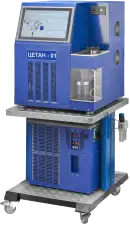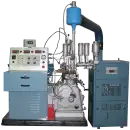fast ordering
Choose a product
Define analysis
- Детальный углеводородный анализ методом газовой хроматографии (количественный анализ)
- Объёмная доля монометиланилина
- Объёмная доля бензола
- Смолы в бензинах (фактические, промытые)
- Кинематическая вязкость при температуре 70-100°C
- Кинематическая вязкость при температуре 30-70°C
- Кинематическая вязкость при температуре 10-30°C
- Давление насыщенных паров
- Вода, массовая доля по ГОСТ 2477 тёмных НП
- Вода, массовая доля по Карлу Фишеру (EN ISO 12937:2000)
- Температура вспышки в открытом тигле
- Плотность тёмных НП
- Плотность светлых НП
- Седиментационная устойчивость (дополнительно необходим показатель "ПТФ" для исходного образца)
- Температура помутнения
- Температура застывания, температура потери текучести тёмных НП
- Температура застывания, температура потери текучести светлых НП
- Смазывающая способность дизельного топлива
- Цетановое число по ГОСТ 58440
- Цетановый индекс (в стоимость включены плотность и фракционный состав)
- Октановое число по моторному методу
- Октановое число по исследовательскому методу
- Фракционный состав светлых НП
- Сера, массовая доля
- Температура вспышки в закрытом тигле
- Предельная температура фильтруемости (ПТФ)
- Металлы в нефтепродуктах (железо, марганец, свинец)
Choose a target
standard solutions






Constant checking of fuel quality in the Neftekhim-Ekspert laboratory will reduce vehicle repair costs by up to 40%





news and publications
Why is it important to use high-quality automobile fuel?
Using high-quality fuel helps ensure reliable engine operation, reduce repair costs, increase productivity and reduce harmful emissions, which has a positive effect on both the budget of the car owner or enterprise and the health of the environment.
DetailWhy do you need to know the fractional composition of fuel?
Fractional composition is the main indicator of fuel volatility. The combustion rate of diesel fuel directly depends on the content of light fractions in it - the lower the initial boiling and distillation temperature at 10% vol., the faster the fuel burns.
DetailWhy does the iron content in gasoline damage the engine?
The iron content in gasoline inevitably leads to various engine problems. This element may be present in fuel as a result of the use of iron additives. By accumulating on the surfaces of parts such as pistons, valves, rings and cylinders, iron leads to wear and damage, increased fuel consumption, and in some cases, engine failure.
DetailOrder a study
A simple approach to complex research